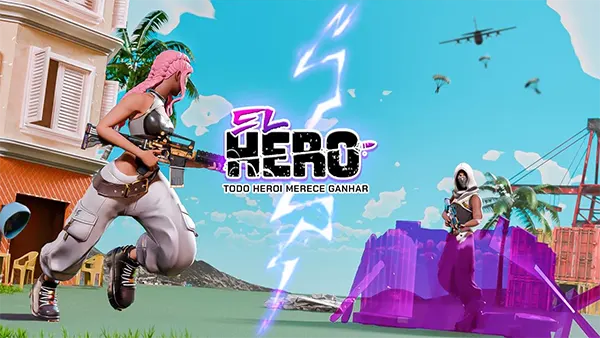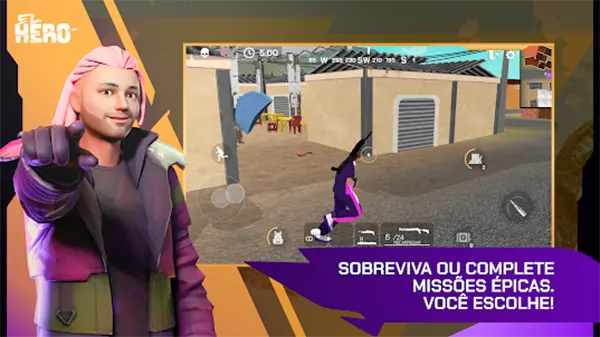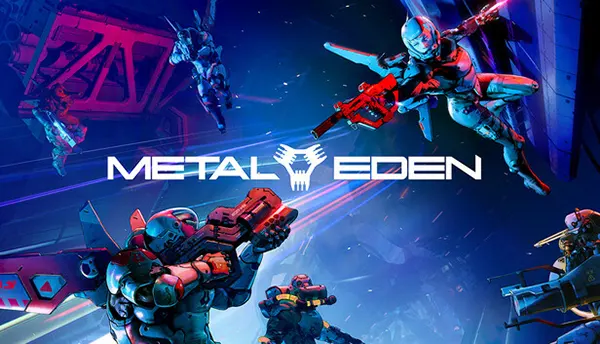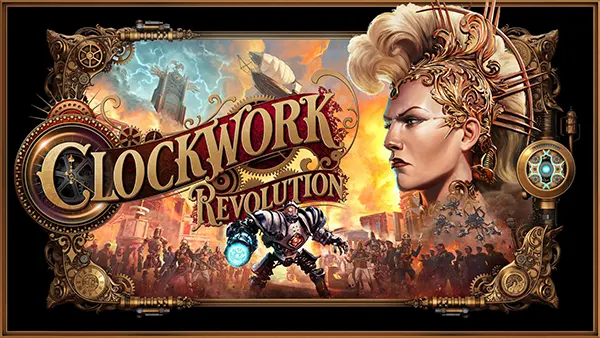El Hero – Brazilian Battle Royale with Cultural Elements

El Hero is a standout battle royale title developed in Brazil, fusing classic survival mechanics with vibrant local culture. Unlike its international counterparts, El Hero doesn’t just drop players into a generic map—it throws them into dynamic, folklore-inspired arenas teeming with historical and cultural symbolism. As of February 2025, it has gained traction both domestically and internationally, with players praising its authenticity and gameplay depth.
Brazilian Folklore as the Backbone of Game Design
What separates El Hero from most battle royale titles is its deep narrative integration of Brazilian folklore. Maps are shaped after iconic locations such as the Amazon rainforest, the favelas of Rio, and colonial towns, each packed with mythological creatures like the Curupira and Boitatá. These elements are not merely aesthetic—they interact with players, influencing battles and strategies.
Playable characters are inspired by both modern Brazilian heroes and traditional legends. Players can take on the role of a Capoeira fighter, a Candomblé priestess, or a streetwise graffiti artist, each with unique abilities shaped by their origins. The game doesn’t reduce Brazilian culture to a stereotype; instead, it presents a carefully researched and vivid reflection of the nation’s diversity.
In-game audio also plays a significant role in immersion. The soundtrack features samba, funk carioca, and indigenous chants, setting the rhythm for each encounter. Sound design goes beyond entertainment—it informs players of approaching enemies through jungle bird calls or urban noises, adding a fresh tactical layer.
Real-World Locations Reimagined in the Game
El Hero’s battle zones are re-creations of real Brazilian landmarks, which are both beautiful and dangerous. Players can scale the Sugarloaf Mountain or seek refuge in a colonial church during gunfire. Each environment comes with environmental hazards—swamps slow you down, while cobbled alleys amplify footstep noise.
This approach creates a strategic need to learn terrain—not just for loot, but for survival. Knowing which districts are prone to NPC patrols or supernatural anomalies can mean the difference between victory and elimination. It introduces a geographical literacy that encourages exploration and repeat play.
More importantly, developers consulted local communities and historians when designing these maps. This ensured not just authenticity, but also respect. The result is an engaging battleground that feels lived-in rather than manufactured, blending virtual action with national memory.
Gameplay Mechanics Rooted in Brazilian Culture
Combat in El Hero mixes traditional shooting mechanics with melee combat styles native to Brazil. Capoeira, with its acrobatic dodges and spins, becomes a vital asset in close-quarters combat. Players can combine physical prowess with magical artefacts drawn from Candomblé rituals to create hybrid strategies.
Resource gathering also leans into cultural references. Instead of typical medkits, players brew herbal infusions from Amazonian plants. Armour might include football pads or carnival costumes reinforced with steel. Every piece of gear has a story rooted in the Brazilian lifestyle, offering an educational element alongside gameplay.
Skill trees are based on personal growth paths named after Brazilian idioms or proverbs. For instance, the “Pe no Chão” path enhances mobility and stealth, referencing the idea of staying grounded and alert. This design choice adds narrative flavour and regional identity to traditional RPG systems.
Multiplayer Modes and Community Integration
El Hero offers multiple online modes, from classic last-person-standing to “Favela Defence,” a co-op mission where players protect neighbourhoods from mythological invaders. These community-themed challenges foster cooperation and reinforce the social values embedded in the game’s DNA.
The title also includes an in-game storytelling mode, where players can submit urban legends or local tales. These are reviewed by a moderation team and, if selected, turned into side missions or seasonal events. It’s a clever way to crowdsource content while strengthening cultural roots.
Brazilian streamers and eSports teams have embraced El Hero, turning it into a cultural export. Tournaments often feature traditional music and costumes, making competitive events feel more like festivals than competitions. This reinforces the game’s ethos: blending fun with national pride.

Technology, Accessibility, and Global Appeal
Running on a lightweight yet robust engine, El Hero is optimised for mid-range devices—a conscious decision by developers to ensure inclusion across income groups. It supports localised language packs for multiple Brazilian dialects and accessibility features for players with disabilities.
The game is fully cross-platform, allowing mobile, console, and PC users to play together. It also uses a fair monetisation model with no pay-to-win elements, relying instead on cosmetic items inspired by cultural attire, street art, and festive masks. This respects the player base while funding future updates.
Internationally, El Hero has found niche communities across Europe, Southeast Asia, and Africa. Its unique identity and refreshing departure from Western tropes make it a compelling addition to the genre. Developers are actively expanding partnerships for localisation and distribution in more markets.
The Road Ahead for El Hero
Looking forward, the developers plan to introduce a story campaign based on Brazilian independence heroes, further linking history with interactive entertainment. They also aim to implement educational missions about environmental issues affecting the Amazon and indigenous communities.
El Hero is not just another game—it’s a vehicle for storytelling, cultural preservation, and social commentary. It demonstrates how game development can evolve beyond entertainment into a meaningful, educational experience. This elevates its status among 2025’s most innovative titles.
By staying true to its roots while embracing global standards of gameplay and accessibility, El Hero is positioned to become a long-term cultural ambassador for Brazil in the gaming world. Its success story proves that regional narratives can resonate universally when crafted with care and authenticity.





